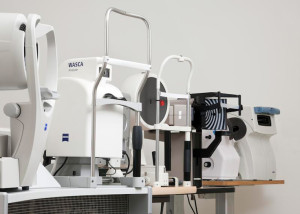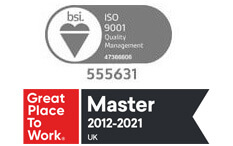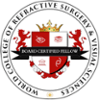Do Laser Eye Surgery Results Correlate with Technology?

It’s incredible to think that Laser Eye Surgery is now the most commonly performed elective procedure in the world with over a million people benefiting from treatment every year. The field of refractive surgery has come a long way in recent decades and is almost unrecognisable from the procedure spearheaded in the mid-20th century.
Perhaps the most significant factor in this impressive advancement is the development of new, innovative technologies that have helped to make Laser Eye Surgery safer, more effective, and more accessible.
But does more up-to-date technology really make for better Laser Eye Surgery results?
A Brief History of Laser Eye Surgery
The technique that preceded LASIK (the most popular Laser Eye Surgery procedure) was first performed in 1948 by Spanish ophthalmologist Jose Ignacio Barraquer Moner. While Moner is often referred to as “the Father of Modern Refractive Surgery“, his procedure was understandably much less refined than those performed today.
In the 75 years or so since Moner performed the first “keratomileusis” procedure, technology has advanced beyond recognition. For example, while Moner’s procedure was performed with a manually driven microkeratome to remove a disc of anterior corneal tissue which was then reshaped using a watchmaker’s lathe, surgeons today are able to utilise the power of high-precision lasers for a less invasive (and grizzly) treatment.
Still, it might surprise you to learn that lasers have been used in refractive surgery for almost 40 years. In fact, the first laser PRK procedure was performed in 1988! Since then, techniques and technology have continuously evolved and improved to make Laser Eye Surgery safer and increasingly efficient.
Laser Eye Surgery Technology at London Vision Clinic
At London Vision Clinic, we don’t only use the most up-to-date Laser Eye Surgery technology, but we also help to develop it. For example, take the Artemis Insight 100 – the most accurate corneal scanner in the world – developed by our very own founder, Professor Dan Reinstein, alongside a team of LASIK experts.
With a superior imaging system and optimal micro-biometric capabilities, the Artemis Insight 100 has greatly improved patient safety and surgery outcomes. This technology has helped to enable many patients who once would have been rejected for Laser Eye Surgery due to a high-profile prescription to now be eligible to have Laser Eye Surgery and even achieve the same quality results as those with lower prescriptions.
At our Harley Street clinic we aim to select the best Laser Eye Surgery technology, including:
- The Zeiss MEL 80 Excimer laser offers the most accurate, auto-stabilised calibrated laser energy delivery.
- The Zeiss VisuMax Femtosecond laser allows the shortest treatment time and is surprisingly comfortable.
- The Artemis Insight 100™ ultrasound scanner was invented by Professor Reinstein and since 2016, available worldwide. It provides the most accurate corneal measurements in the world.
- The Zeiss WASCA High-Resolution Wavefront Aberrometer provides the highest-resolution wavefront data available.
- Topography produces a shape ‘map’ of the front and back surfaces of the cornea, showing its varying curvatures. We use the Pentacam and the Bausch & Lomb Orbscan II – the most advanced instruments of their kind.
These technologies, in combination with a thorough pre-operative examination and the expertise of an experienced surgeon, help us to ensure we achieve the very best outcomes for our patients.
Laser Eye Surgery Technology and Costs
In an ideal world, every clinic would use only the most up-to-date technology. But the reality is many high street providers may still be using technology that was introduced at the turn of the century. This is one of the ways they can offer bargain prices and deals that seem too good to be true and explains why prices can vary so much between clinics.
This means that choosing a clinic with access to the latest technology will more than likely cost you more than the average Laser Eye Surgery price. Compared to the costs of low-end providers they may even seem expensive, but when it comes to your vision, nothing pays off more than receiving the safest, highest-quality Laser Eye Surgery treatment.
If you’d like to book a consultation with us, or find out more about current Laser Eye Surgery Technology, get in touch today.


